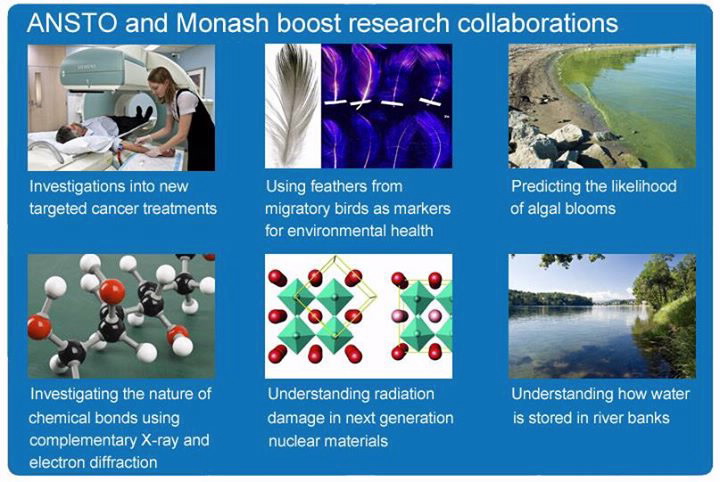ANSTO and Monash University have announced start-up funding for seven research projects that will bring together some of the nation’s brightest minds and best scientific infrastructure.

With funding costs to be shared by both institutions, the projects cover a broad spectrum of subjects including the environment, health, and physics and will involve state of the art scientific infrastructure managed by both Monash and ANSTO, including the Australian Synchrotron.
ANSTO and Monash signed an extensive research collaboration MOU in 2011, and have mapped out strategic directions for the partnership. ANSTO’s Group Executive, Nuclear Science and Technology, Greg Storr said funding for these projects is one of the results of this agreement.
“As well as providing impetus for some really promising research projects, this funding will pave the way for new models of co-operation between ANSTO, Monash and the Australian Synchrotron that are likely to bring long term benefits,” he said.
ANSTO’s Senior Advisor for Synchrotron Science Richard Garrett says that Monash, which boasts the largest student body in Australia, is a key university partner for ANSTO.
”Now that ANSTO has taken on the operation of the Australian Synchrotron, it is clear that our complementary infrastructure can be used to assist us with many similar research aims,” Richard said.
“The goal of the small project grants that we have just announced is to encourage new collaborative research projects with Monash, which will grow opportunities and help attract more substantial future ARC or NHMRC funding.”
The successful projects and their proponents are:
- investigations into new targeted cancer treatments [Tom Davis, Cyrille Boyer, Mike Whittaker, Chris Porter (Monash), Ivan Greguric (ANSTO)];
- using feathers from migratory birds as markers for environmental health, [Jennifer Lavers (Monash),Richard Banati, Nicholas Howell (ANSTO)];
- investigating the nature of chemical bonds using complementary X-ray and electron diffraction, [Philip Nakashima (Monash) and James Hester (ANSTO)];
- predicting the likelihood of algal blooms [Perran Cook, John Beardall (Monash) Henk Heijnis (ANSTO)];
- understanding radiation damage in next generation nuclear materials [(Joanne Etheridge, Amelia Liu (Monash) Greg Lumpkin, Zhaoming Zhang, Mark Blackford (ANSTO)] ;
- creating new methods for imaging matter at the atomic scale [Andrew Peele, Martin de Jonge, (ANSTO/Australian Synchrotron) Joanne Etheridge, David Paganin (Monash)]; and
- understanding how water is stored in river banks [Ian Cartwright, Harald Hofman (Monash) Dioni Cendon, Robert Chisari (ANSTO)].


